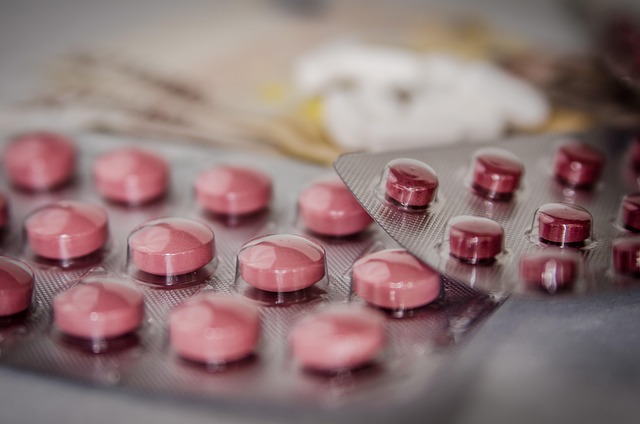GLP-1 drugs are cost-effective, once-daily medications that mimic natural hormones to manage type 2 diabetes (T2D). They improve insulin secretion and reduce glucagon release, offering benefits beyond glycemic control like weight reduction and improved cardiovascular outcomes. With long-acting properties and a superior safety profile, GLP-1 drugs simplify dosing and minimize medical expenses. Real-world evidence shows significant clinical benefits and cost-effectiveness in various settings. However, high costs and reimbursement policies pose barriers to access, highlighting the need for healthcare policymakers to promote generics and biosimilars. Patient education on self-management techniques further enhances the effectiveness of GLP-1 drug therapy, ultimately improving health outcomes and reducing long-term treatment costs.
“GLP-1 receptor agonists, or GLP-1 drugs, have emerged as a powerful tool in diabetes management, offering significant benefits beyond blood sugar control. This article delves into the cost-effectiveness of these innovative therapies. We explore how GLP-1 drugs provide substantial savings compared to traditional diabetic medications, while also examining the direct and indirect expenses associated with Type 2 diabetes treatment. By analyzing real-world evidence and addressing challenges in access, we discuss strategies to enhance affordability, including patient education and healthcare policy interventions, ultimately aiming for cost-conscious yet effective diabetes care.”
Understanding GLP-1 Receptor Agonists: Mechanism and Benefits

GLP-1 receptor agonists, also known as GLP-1 drugs, are a class of medications that mimic the effects of the natural hormone glucagon-like peptide-1 (GLP-1). These drugs play a significant role in managing type 2 diabetes by enhancing insulin secretion and reducing glucagon release. The mechanism behind their effectiveness lies in their ability to bind to GLP-1 receptors in the pancreas, stimulating insulin production in response to food intake.
Beyond their primary function in glycemic control, GLP-1 drugs offer several additional benefits. They can help reduce body weight by increasing feelings of fullness and decreasing appetite, making them valuable tools in the fight against obesity. Moreover, these medications have been shown to improve cardiovascular outcomes, including lowering blood pressure and reducing the risk of cardiovascular events, thereby contributing to overall health and cost savings in long-term patient management.
The Current Landscape of Diabetes Management

The current landscape of diabetes management is marked by a growing awareness and emphasis on personalized, cost-effective treatments that improve patient outcomes. Traditional insulin therapy has long been the cornerstone of diabetes care, but it often faces challenges related to adherence and lifestyle adjustments. Enter GLP-1 drugs—a class of medications that have emerged as powerful tools in the fight against diabetes. These drugs mimic the effects of natural hormones, enhancing insulin secretion and suppressing glucagon release, thereby improving blood sugar control.
The advent of GLP-1 receptor agonists has revolutionized diabetes care by offering multiple benefits beyond traditional therapies. They not only facilitate better glycemic control but also aid in weight management—a significant concern for many diabetic patients. Moreover, their once-daily administration and improved patient convenience have contributed to their growing popularity. As the demand for effective, affordable diabetes treatments continues to rise, GLP-1 drugs are poised to play a pivotal role in shaping the future of diabetes management.
How GLP-1 Drugs Offer Cost Savings Compared to Other Diabetic Medications

GLP-1 receptor agonists, or GLP-1 drugs, offer a unique advantage in terms of cost-effectiveness compared to other diabetic medications. One of the primary reasons for this is their long-acting nature. Unlike some short-acting insulin therapies, GLP-1 drugs provide sustained blood sugar control throughout the day and night, reducing the need for frequent injections or complex dosing regimens. This simplicity can significantly lower treatment costs by minimizing patient burden and the potential for errors.
Additionally, GLP-1 drugs have been shown to have a better safety profile than some other classes of diabetes medication, leading to fewer adverse events and associated medical costs. Their ability to promote weight loss is another cost-saving factor, as obesity management can be a significant expense in diabetic care. By offering both improved glycemic control and potential weight management benefits, GLP-1 drugs represent a more comprehensive and potentially more cost-efficient approach to treating diabetes compared to alternative medications.
Direct and Indirect Expenses in Type 2 Diabetes Treatment

The treatment of Type 2 Diabetes (T2D) involves a range of direct and indirect expenses. Direct costs include medications, insulin injections, and regular medical check-ups. Among these, GLP-1 drugs have emerged as an effective and cost-effective option for managing T2D. These drugs mimic the action of the natural hormone GLP-1, helping to lower blood sugar levels by stimulating insulin production and reducing glucagon secretion.
Indirect costs, on the other hand, encompass the financial burden of complications arising from poorly managed diabetes. Regular monitoring, severe hypoglycemic events, and long-term diabetic retinopathy or nephropathy can significantly impact healthcare spending. GLP-1 drugs not only help in blood sugar control but also reduce these indirect expenses by minimizing the risk of such complications, making them a valuable addition to T2D management strategies.
Real-world Evidence: Success Stories of GLP-1 Drug Therapy

In recent years, real-world evidence has highlighted the significant benefits and cost-effectiveness of GLP-1 drug therapy in managing type 2 diabetes. Success stories from various clinical settings demonstrate that GLP-1 receptor agonists can lead to substantial improvements in glycemic control while offering a favorable safety profile. These drugs have shown their worth by helping patients achieve better blood sugar levels, often with fewer side effects compared to other antidiabetic medications.
The impact of GLP-1 drugs is evident in numerous studies, where they have consistently reduced HbA1c levels, facilitated weight management, and improved overall patient well-being. Moreover, cost-effectiveness analyses indicate that these therapies provide a valuable alternative, offering long-term savings for healthcare systems without compromising patient outcomes.
Challenges and Barriers to Accessing GLP-1 Therapies

Despite the proven benefits of GLP-1 receptor agonists, there are several challenges and barriers that hinder widespread access to these therapies. One major obstacle is their cost—GLP-1 drugs are often expensive, making them less affordable for patients, especially those without comprehensive insurance coverage. This financial burden can discourage individuals from initiating or continuing treatment, potentially leading to poor glycemic control and increased healthcare costs in the long term due to complications associated with diabetes.
Another challenge lies in reimbursement policies and insurance coverage. Not all healthcare providers and insurance plans include GLP-1 therapies in their drug formularies, making it difficult for patients to access these medications. Additionally, some insurance companies may place restrictions on prescribing practices, such as requiring prior authorizations or setting limits on the quantity of medication dispensed. These policies can create barriers for healthcare professionals and ultimately impact patient care.
The Role of Healthcare Policy and Insurance Coverage

Healthcare policy plays a pivotal role in shaping access and affordability for patients requiring treatment with GLP-1 drugs. Insurance coverage, often determined by these policies, directly impacts whether individuals can afford their prescribed medications. Many countries have implemented strategies to enhance cost-effectiveness in healthcare, including negotiating drug prices with manufacturers and encouraging the use of generic alternatives when available. These measures aim to reduce out-of-pocket expenses for patients while ensuring they receive evidence-based treatments like GLP-1 agonists.
Policymakers and insurance providers must consider the long-term benefits of GLP-1 drugs in managing chronic conditions, such as type 2 diabetes. By understanding the value these medications bring to healthcare systems, they can design policies that support patient adherence and improve health outcomes. This, in turn, can lead to more sustainable and cost-efficient healthcare for all.
Future Perspectives on GLP-1 Drugs: Enhancing Accessibility and Affordability

As the field of diabetes management continues to evolve, future perspectives on GLP-1 drugs hold immense potential for enhancing accessibility and affordability. Ongoing research aims to optimize these medications’ formulations and delivery methods, such as exploring long-acting injectables or even oral forms with reduced absorption barriers. Such advancements could make GLP-1 drugs more convenient and cost-effective, encouraging broader adoption among patients in need.
Additionally, the development of biosimilars and generics for GLP-1 receptor agonists is anticipated to significantly drive down their costs. Increased competition in the market is expected to lead to more affordable pricing models, making these life-changing medications more accessible to a diverse range of patients. These future innovations promise to improve diabetes care while ensuring better financial accessibility for those who rely on GLP-1 drugs.
Patient Education and Self-management Strategies for Cost-conscious Diabetes Care

Patient education plays a pivotal role in cost-conscious diabetes care, especially with the advent of GLP-1 drugs. By empowering individuals to self-manage their condition effectively, healthcare providers can achieve better glycemic control while reducing overall treatment costs. Educational interventions should focus on helping patients understand the importance of consistent medication use, healthy lifestyle choices, and regular monitoring. Teaching patients about the impact of diet and exercise on blood sugar levels can foster behavior changes that complement GLP-1 drug therapy.
Self-management strategies include setting realistic goals, tracking blood glucose levels, and learning to recognize hypoglycemic and hyperglycemic episodes. Encouraging patients to keep detailed records and regularly communicate with healthcare teams ensures timely adjustments to treatment plans. This proactive approach not only enhances patient adherence but also reduces the need for frequent medical interventions, ultimately contributing to more efficient diabetes management and cost savings associated with GLP-1 drug therapies.
